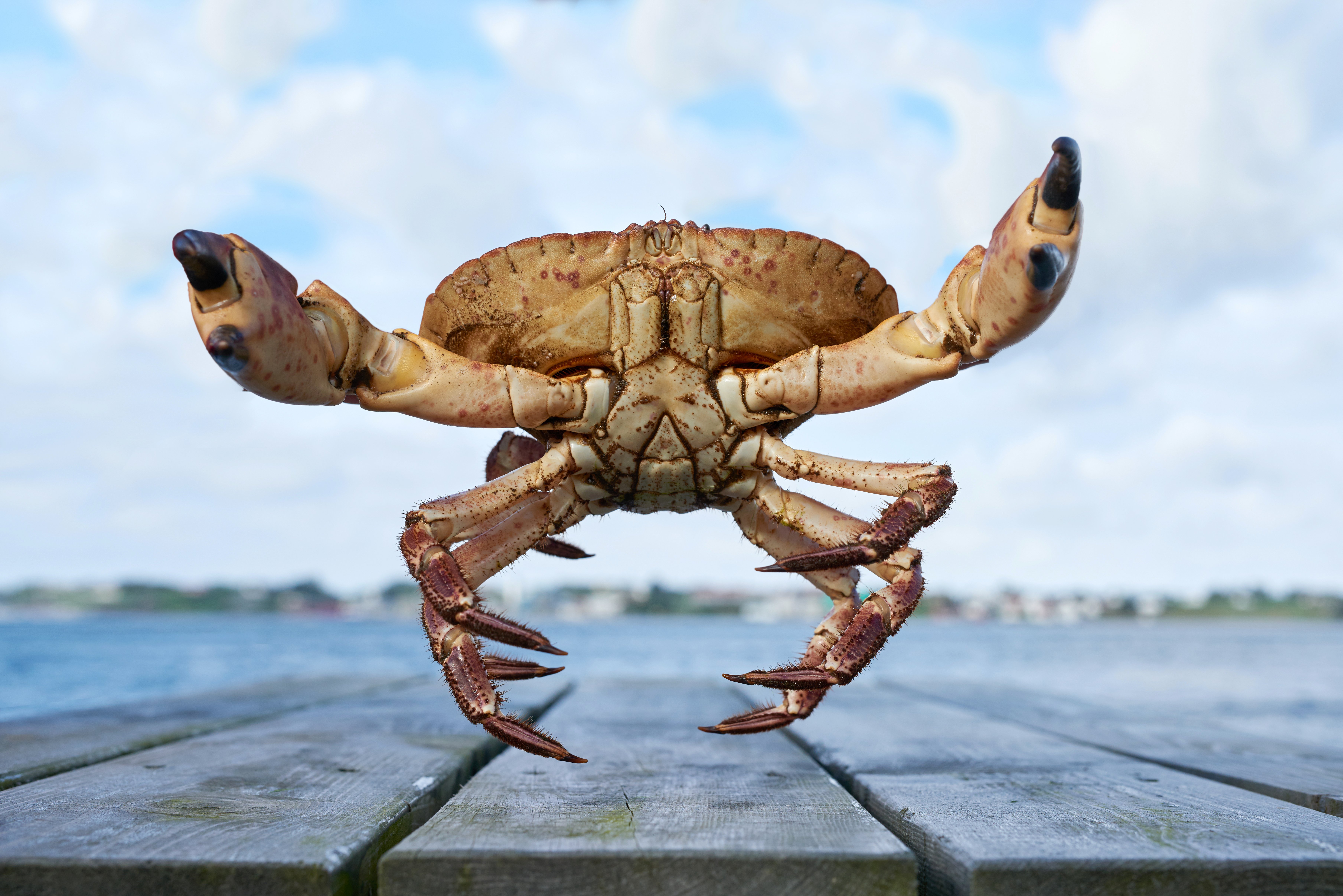Is It Safe To Eat Brown Crab?
26 April 2020

A new study identifies worrying levels of cadmium in the brown meat of edible crabs, indicating a need for better regulatory measures to protect human health.
Many people around the world enjoy eating the meat of the brown crab (Cancer pagurus: the edible crab), which is prized for its soft, delicate and sweet taste. In European Union (EU) countries alone, the catch is around 45,000 tonnes per year.
The brown crab contains two different types of meat – the white meat mainly comes from the claws and legs, and the brown meat from the body. In Norway, people regularly consume whole brown crabs, while in other countries, such as Portugal, the brown meat is more popular.
But several reports have raised concerns over the high concentrations of cadmium in brown crab meat. Yet while there are legal limits by regulatory bodies in place for the levels of this toxic metal in white meat, these are still lacking for the brown meat, which generally contains even higher concentrations.
So consuming the brown meat of the brown crab poses a potential health risk.
Profiling The Elements In Crab Meat
In a new study, published in Science of the Total Environment, researchers profiled the elemental content of samples from brown crabs collected from a major commercial fishing area off the coast of Norway.1
The researchers collected brown crab during the month of September between 2016 and 2018 from the Mausand region. In total, they collected 65 samples – 61 raw brown meat and 4 raw white meat. After a process of freeze-drying and homogenisation, they used high resolution inductively coupled plasma mass spectrometry (HR-ICP-MS) to determine the elemental concentrations of each sample.
The team used purified water generated by an ELGA laboratory water purification system, minimising the risk of adding contaminants that may affect their results.
Alarming Cadmium Levels
The researchers found that cadmium was the most abundant toxic element in brown crab meat. It was found in extremely high concentrations – ranging from 6.75-14.9 mg of cadmium per kg (dry weight), which they estimated as equivalent to 2.11-4.37 mg of cadmium per kg of crab meat (wet weight).
These levels are particularly alarming when compared to the maximum allowed cadmium concentration of 0.5 mg/kg (wet weight) set by the EU for raw white crab meat.
New Safety Limits For Brown Meat?
The results of this study strongly indicate that it is of paramount importance to have maximum cadmium concentrations set for the brown meat from the brown crab to protect consumers.
However, the situation is not straightforward as there is also evidence to suggest that selenium can interact with cadmium in the body, reducing its toxicity. So it may be important to factor the molar ratio of selenium and cadmium in brown crab meat into risk criteria. After applying this formula to their brown crab samples, the researchers found that one-third would potentially be suitable for human consumption.
Why Choose ELGA LabWater?
ELGA LabWater has been a trusted name in pure and ultrapure water since 1937. Our dedication to ultrapure and pure water is a guarantee that we will continue to provide the best solutions with the best service.
Reference:
- Ervik, H. et al. Elemental content of brown crab (Cancer pagurus) – Is it safe for human consumption? A recent case study from Mausund, Norway. Science of the Total Environment 2019; https://doi.org/10.1016/j.scitotenv.2019.135175
Dr Alison Halliday
After completing an undergraduate degree in Biochemistry & Genetics at Sheffield University, Alison was awarded a PhD in Human Molecular Genetics at the University of Newcastle. She carried out five years as a Senior Postdoctoral Research Fellow at UCL, investigating the genes involved in childhood obesity syndrome. Moving into science communications, she spent ten years at Cancer Research UK engaging the public about the charity’s work. She now specialises in writing about research across the life sciences, medicine and health.
